Jacques François Blondel
architect ; b. January 8, 1705; d. 1774.
He is supposed to have been the son of Jean François Blondel. May 6, 1743, with the approval of the Académie de l'Architecture, he opened one of the earliest of the French private schools of architecture. The success of this school won for him the position of architecte du roi and, in 1756, a membership in the Académie de l'Architecture. In 1762 he was made professor at the Louvre. In 1773 he presented a plan for the improvement of the city of Metz. In 1768 he planned the Hôtel de Ville and Salle de Spectacle at Strasburg, Elsass, Germany. He planned the reconstruction of the abbey of S. Armand near Valenciennes, Nord, France, and the restoration of the cathedral of Chalons-sur-Marne. In 1765 he was a member of the commission charged with the conservation of the cathedral of Strasburg. Blondel was an accomplished engraver. He completed the Architecture Française begun by Jean Marot and published, 1737-1738, De la distribution des maisons de plaisance et de la décoration des édifices en général, and after 1771 the Cours d'Architecture, Paris, 1771-1777, 6 vols., 8vo., which was continued after his death by Pierre Patte.
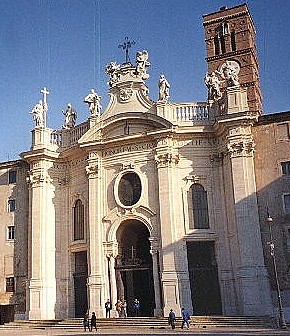
Gregorini, facade of Santa Croce in Gerusalemme (Rome: 1743).
| |
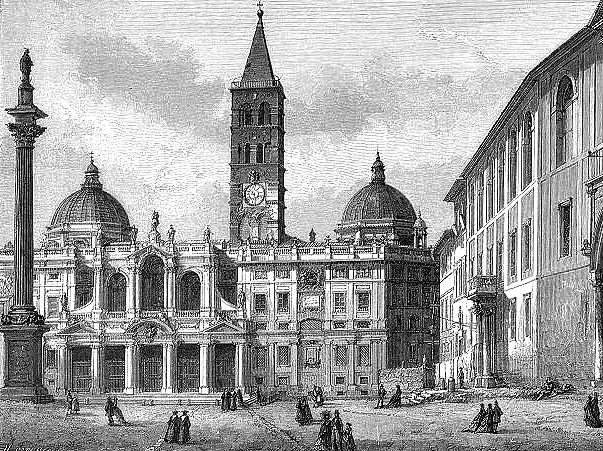
Ferdinando Fuga, facade of Santa Maria Maggiore (Rome: 1743).
| |
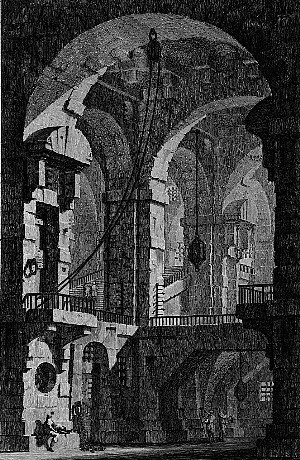  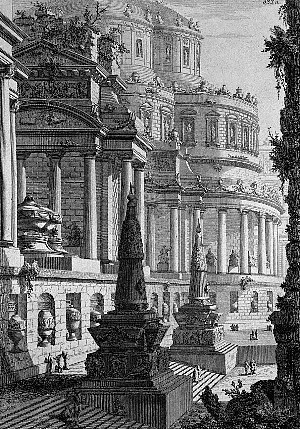 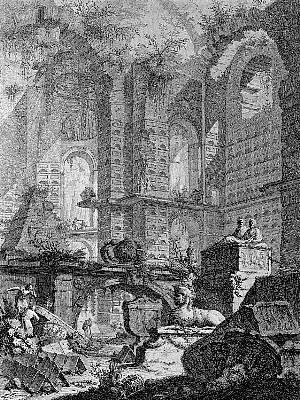
Giovanni Battista Piranesi, Prima Parte di Architetture (Rome: 1743), selected plates.
The "Architecture" of Piranesi
What portion of the actual qualities of an 'architect', in the entire sense of the word, that is to say in the sense of a creator of ideal forms which have practical ends and the imagination of art, what portion of these characteristics are to be found in the figure and personality of G. B. Piranesi? Engraver, painter-engraver, architectural designer, scholar of Roman construction, in his own way an essayist and archeologist, scenographer, did he also strive for an active, militant role in architecture? In short, did he aspire to build as a participant in the architectural movements of his time, for clients who could furnish him themes and commissions equal to his high aspirations and inspirations? Or must his potent charge of architectural knowledge, of architectural dreams and visions, abounding in the immense production of his designs, engravings, and writing, be considered an immense potential which never found favorable conditions for its proper realization? And did he satisfy himself solely through his visions, his evocations, the world or universe which he discovered in his fascinating soul? Through that world which at that time was being revealed in a new light? Was he but the narrator of a poem about ancient history? These questions may seem superfluous, given the complexity of the Piranesian works, all directed to the study and representation of the architectural monuments of Rome, for which the designation of 'architect', beyond the of 'engraver', is implicit.
Vincenzo Fasolo
Not only is practically everything in Piranesi's immense oeuvre "virtual," but the degrees to which he both created "virtual place" and utilized "virtual" representations suggests the concept of virtuality pervaded his whole methodology as well. As a consummate engraver, Piranesi practiced "virtual architecture" designing "magnificent" buildings and an extraordinary city, filled volumes with "virtual archeology," and manifested "virtual prisons" that torture perception.
Viewed as a whole, Piranesi's creative output is nothing less than an enormous museum of architecture in the virtual realm.
seeking precedents... ...finding inspiration
|